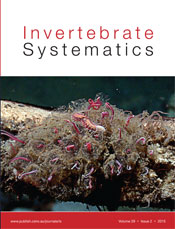IS14055Whale falls, multiple colonisations of the deep, and the phylogeny of Hesionidae (Annelida)
Most known species of hesionids, a group of annelid worms, are shallow-water predators. This paper describes six new species from the deep sea and assesses the evolutionary relationships of 42 shallow and deep-water hesionid species for which DNA data are available. Results suggest multiple colonisations of the deep sea from shallow water and that the proportion of deep-living hesionids may be greater than previously determined.




